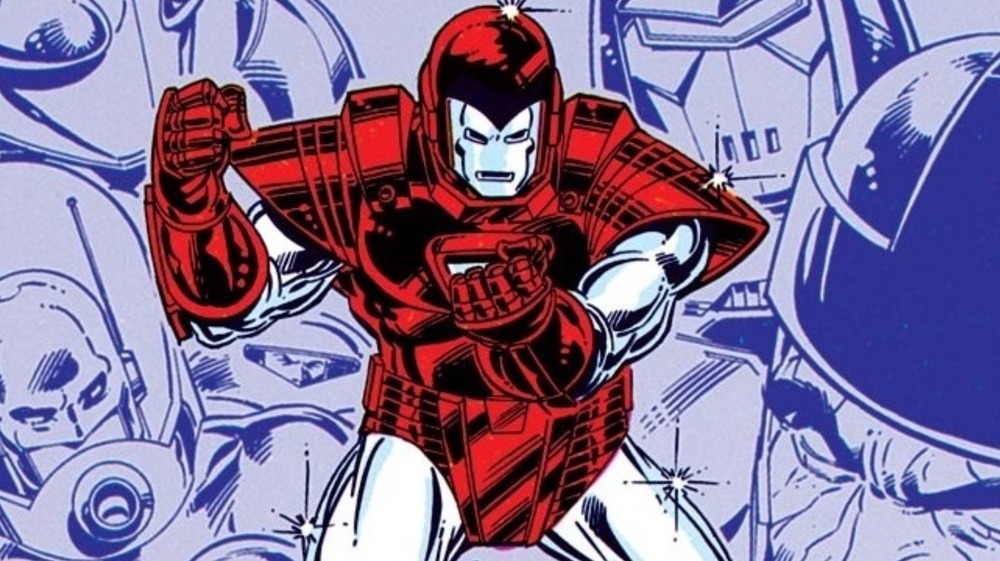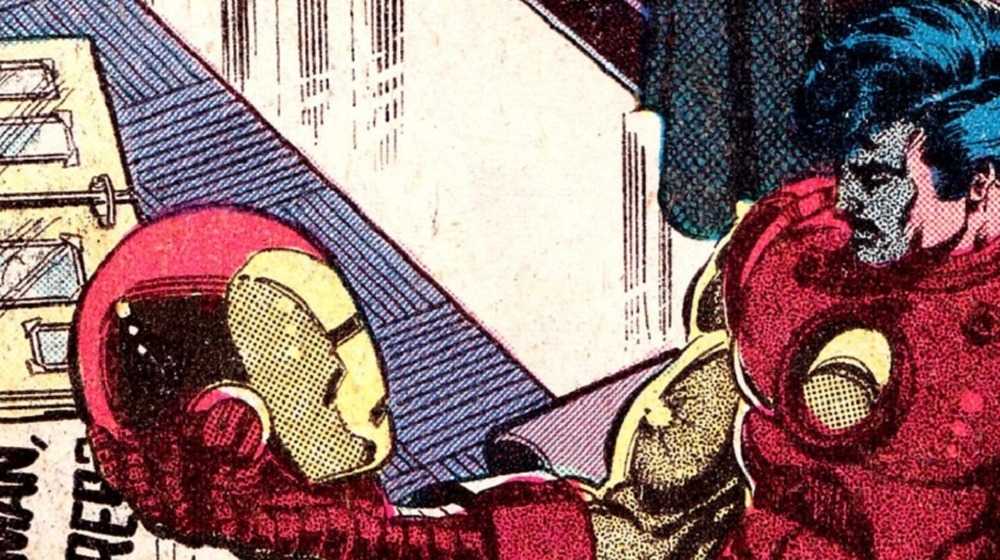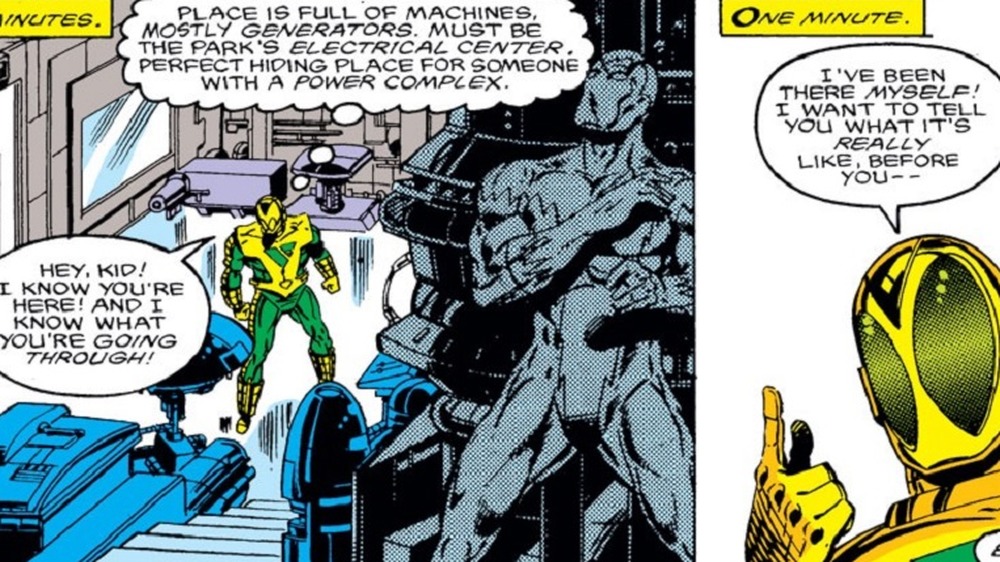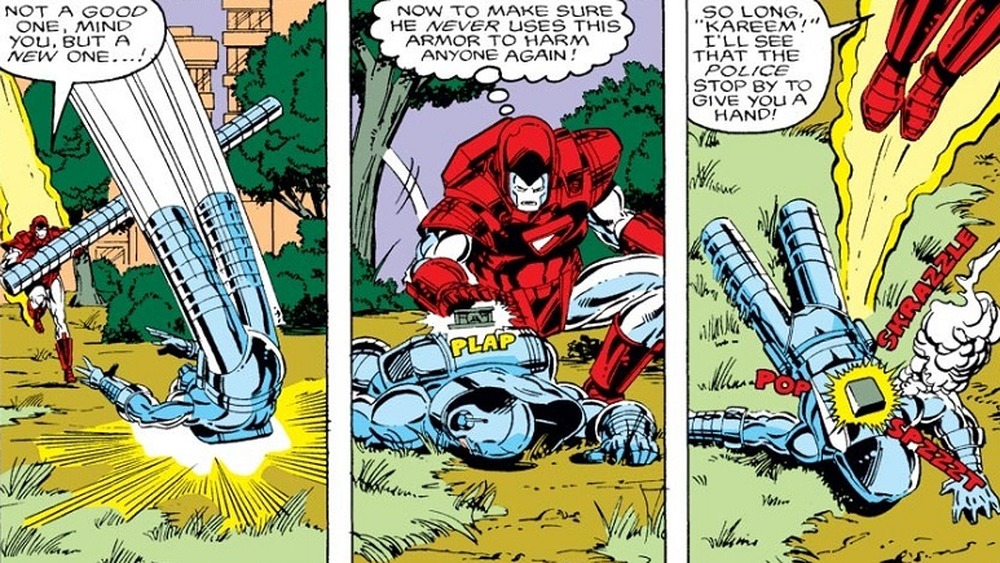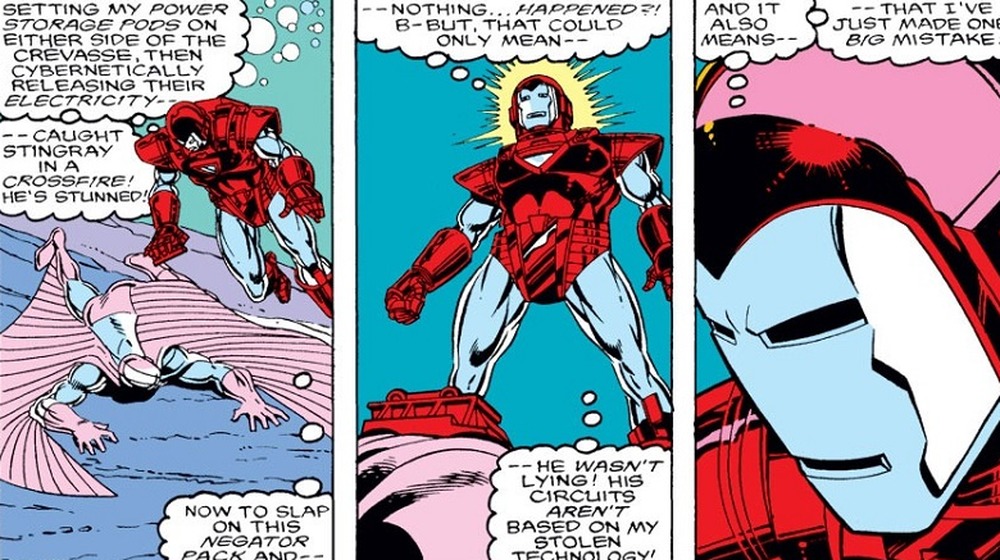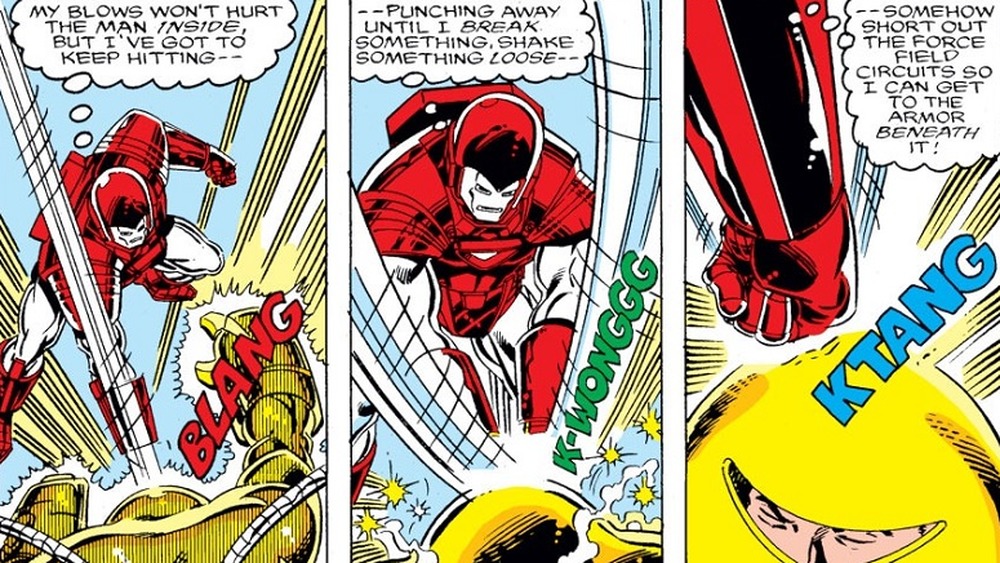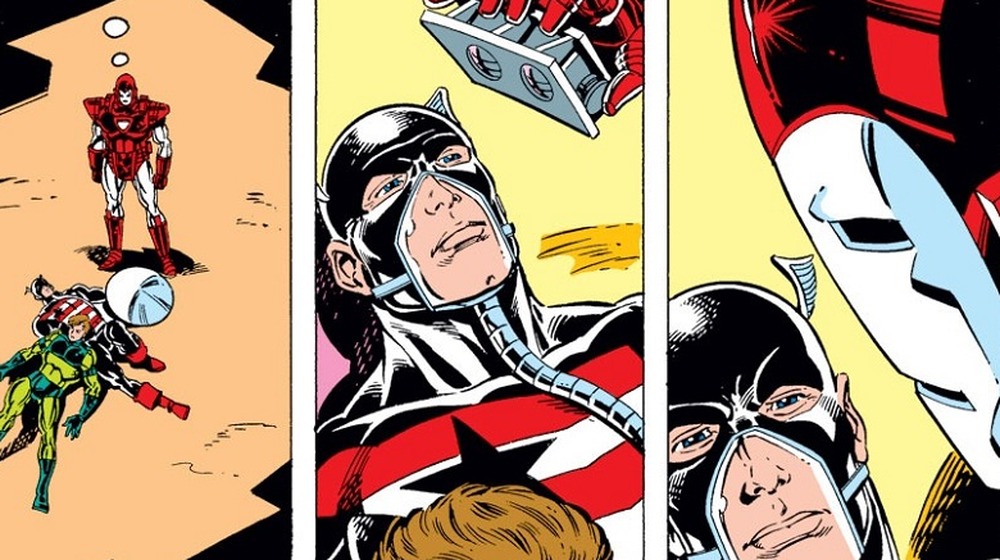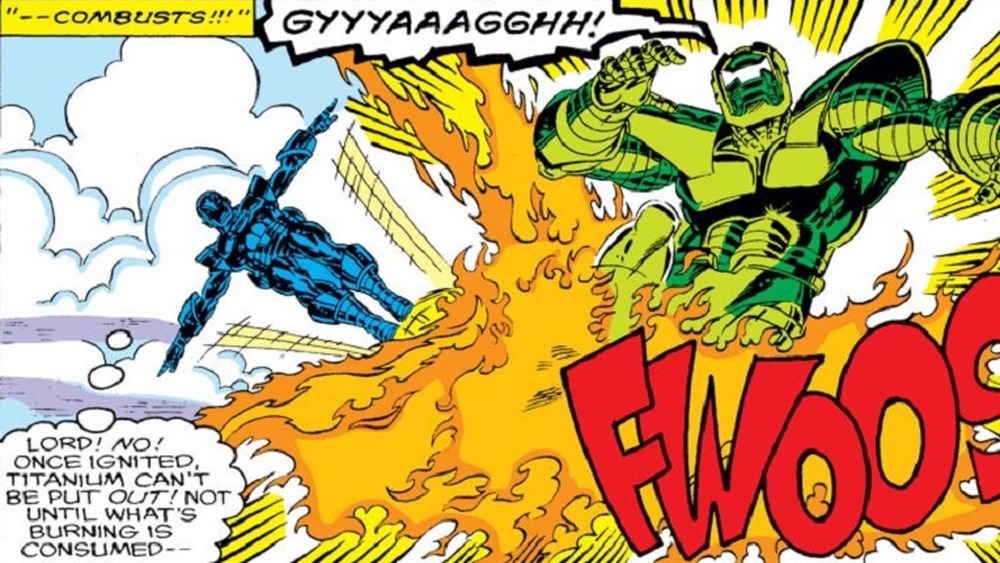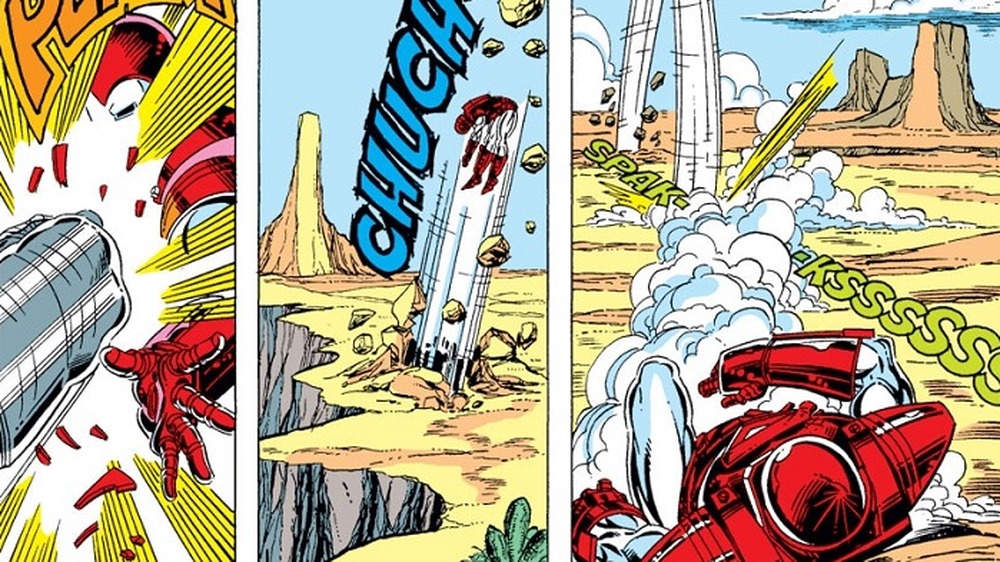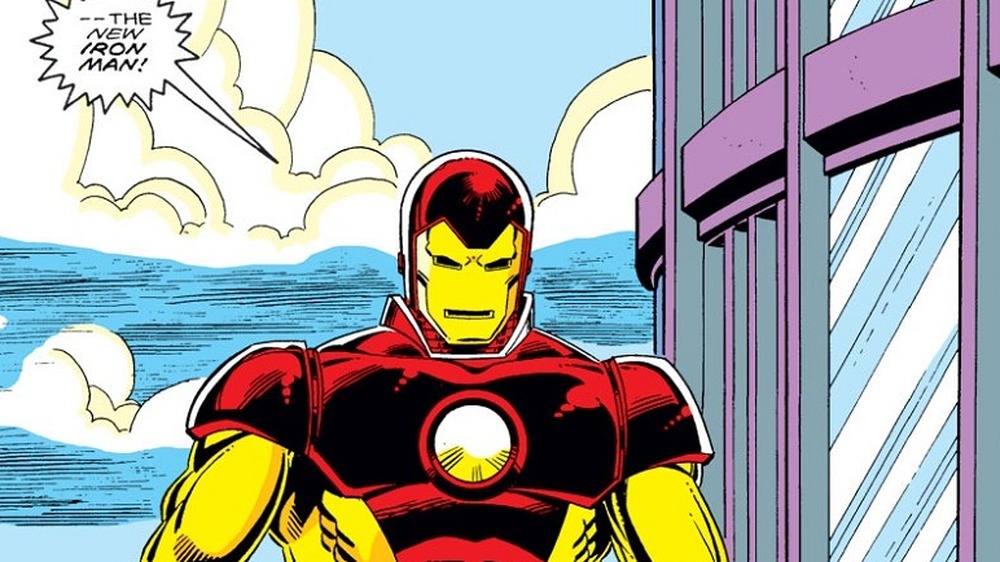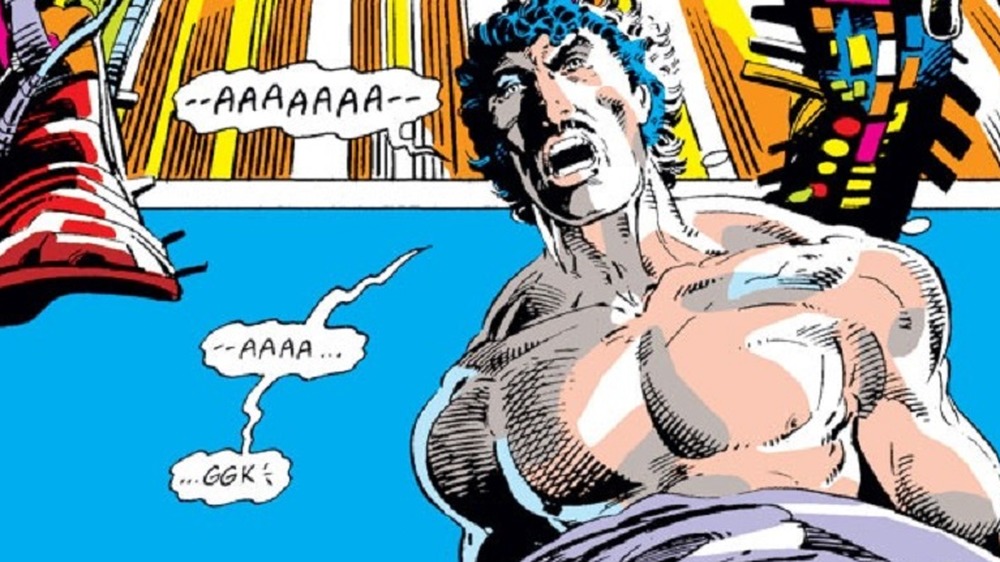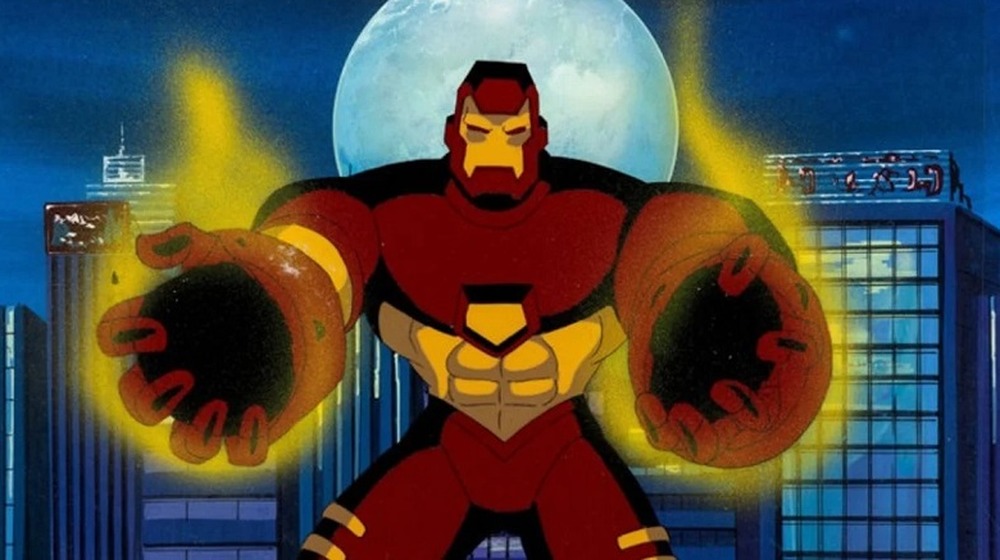Iron Man's Armor Wars Storyline Explained
The classic Iron Man storyline "Armor Wars" will be on Disney+, starring Don Cheadle as Jim Rhodes. The original storyline took place in Iron Man (Volume 1) 225-232, published in 1987 and 1988. The story followed Tony Stark discovering that key, secret elements of his Iron Man technology were stolen by a villain named Spymaster and sold to his biggest industrial rival, Justin Hammer. Hammer used the tech to furnish a host of supervillains' equipment, employing them on jobs and taking half their cut in return.
When Stark realized what had happened, he went on a one-man crusade to destroy the armor of everyone who was using his technology. He felt personally responsible for the pain and suffering his technology had inadvertently created and stopped at nothing to prevent it from happening again. This meant crossing a lot of ethical lines, making enemies out of friends, deceiving the government, accidentally getting people killed, getting kicked out of the West Coast Avengers, causing an international incident, and nearly ruining his own new company.
A lot of material from this run has already been incorporated into the Marvel Cinematic Universe and adapted into other media. The Disney+ show will have the new wrinkle of Jim Rhodes being the one to address the impact of Stark's legacy and run the gauntlet of ethically murky action in order to achieve a greater good.
David Michelinie and Bob Layton's second run
The creative crew behind the storyline was David Michelinie and Bob Layton as co-writers and Mark Bright as the artist, with Layton inking. Michelinie and Layton had a classic run on the book a decade earlier that modernized Tony Stark. Iron Man was originally conceived as the typical Marvel hero: powerful and heroic, but with a terrible weakness or secret. In his case, Stark had to wear his armor at all times or else shrapnel near his heart would kill him. Iron Man frequently ran out of power halfway through fights, even against lesser opponents.
Michelinie and Layton, building on ideas that Bill Mantlo established, changed that playbook entirely. They rethought Tony Stark as a man of extreme appetites and ambitions. He always had a woman or two on his arm, loved to drink and gamble, and was an adrenaline junkie. His opponents weren't communist spies like the Black Widow, faceless technological organizations like AIM, or criminals like the Maggia. Instead, his new arch-foes were morally bankrupt industrialists like Justin Hammer and Edwin Cord, as well as Roxxon Oil.
Stark would always outwit and outpower his opponents. However, his greatest opponent in this run was himself. In the famous "Demon In A Bottle" storyline, Stark's dependence on alcohol turned into an addiction. Michelinie and Layton returned to the series after Dennis O'Neil had Stark hit rock bottom, losing his company to Obadiah Stane and drunkenly wandering the streets.
Setting up Armor Wars
In setting up the new Stark Enterprises in California, Stark still had his friend and pilot Jim "Rhodey" Rhodes by his side. Rhodes nearly died as Iron Man and chose not to wear the armor for a long time. Stark's cliffside house that included a basement lab, seen in the Iron Man movies, was introduced in this run. New corporate mainstays like Marcy Pearson, Bert Hindel, and Abe Zimmer were introduced, while old favorites Bambi Arbogast and Scott "Ant-Man" Lang returned.
Stark acquired a small company called Accutech, which was working on cutting-edge energy technology. Accutech turned down Roxxon's bid because of their ethically dubious business practices. They weren't wrong, as Roxxon reacted by hiring a legendary industrial saboteur named the Ghost (a different version of which was a villain in Ant-Man And The Wasp) to wreck the company. The Ghost was out to get Stark, and even when Roxxon told him to back off, he continued his vendetta. Roxxon sent longtime Iron Man foe Spymaster to kill the Ghost, but the Ghost turned the tables, murdering Spymaster by materializing him in the middle of a wall. The Ghost seemingly died by his own hand trying to sabotage Stark Enterprises.
A longtime operative of Justin Hammer named Force went rogue, sick of all the hardship he had caused. He went to Tony Stark, who helped him fake his death and gave him a new job in exchange for information — and Force's armor.
Stark Wars
The first chapter of "Stark Wars" (which is what the story was called at the time) started with Stark examining Force's armor. He made a horrifying discovery: There was circuitry in there that he had created and was so secret that he'd never even patented it. He had no idea who stole it, when, or how. However, he was determined to find out, because he felt personally responsible for the pain caused by those who had access to his technology.
Tony initially deduced that it was Hammer who stole his tech. He turned to Abe Zimmer to help him hack into Hammer's database, but Zimmer needed an inside man to help. Tony turned to his old electronics whiz friend and employee Scott Lang, who had just moved to California. Unbeknownst to Tony, Lang was also Ant-Man, and he helped Zimmer get what he needed: a file that had a list of everyone who had benefited from Stark's stolen technology. Lang, an ex-con, was reluctant to do something illegal, but Tony swayed his hand with money.
Stark did try to go through the courts at the same time he hunted down people with his tech. First up: the B-list villain Stiltman. Stark built a scanner to track down his tech when it was in use, as well as a Negator Pack that would destroy his tech. The Mauler gave up his armor without a fight, but one of the Controller's mind-slaves died when Iron Man was stopping him.
Glitch
Not only was Stark's attempt to get his tech back through the courts not working, but he was also sued by Stiltman (excessive force) and the Controller's followers (freedom of religion). Iron Man continued his vendetta by frying the armor of the trio of mercenaries called the Raiders, who just happened to be working for his old corporate enemy Edwin Cord. Cord had vowed revenge for Stark putting him out of business years earlier.
Abe Zimmer called Stark and told him that due to a glitch in the file, there was one name that didn't appear on it. Tony analyzed a list of armored heroes and villains and reasoned that the only one he couldn't account for was the part-time Avenger and oceanographer Stingray. Iron Man flew to Hydro-Base and demanded to examine Stingray's armor and was indignant when he was refused.
Iron Man chased Stingray, tricked him into a trap, and stunned him. When he slapped on a Negator Pack, nothing happened. Stark was wrong, and he had the wrong man. He knew there would be consequences for his actions. As a result, with threats of government lawsuits looming, Stark held a press conference and "fired" his longtime employee and bodyguard, Iron Man. At this stage, Iron Man's identity was still a secret. It was a clever play on Stark's part.
The Last Mandroid
After hunting down the Beetle and hitting him with a Negator Pack, Iron Man talked to the West Coast Avengers and told them that he couldn't tell them why he was on this particular vendetta and asked for their trust. Hawkeye reluctantly agreed to go along with this.
When Tony arrived at his office, Nick Fury and several S.H.I.E.L.D. agents were waiting. Stark invented a false secret identity for Iron Man named "Randall Pierce" and offered to help Fury track down "Pierce" in exchange for getting Iron Man's armor back. Stark set up this elaborate ruse to make Fury think he was on his side so that he could have access to the S.H.I.E.L.D Mandroids. These were suits of sophisticated armor piloted by elite agents. Stark was now deliberately deceiving the government and his friends, and while he didn't like it, he still did it.
Stark tricked Fury into sending the Mandroids to capture Iron Man and then set Negator Pack traps that knocked out two of them. Iron Man made short work of two more Mandroids, but the last one stood with a number of unarmored field agents. Iron Man didn't want to hurt them, so he used sonics to knock out the agents, and then the pilot of the final Mandroid ejected himself from the suit when he saw Iron Man bearing down on him. When Fury accused Stark of betrayal, Tony produced a "bug" that Iron Man supposedly planted there, sidestepping guilt.
Who Guards the Guardsmen?
At this point in time, Steve Rogers had been forced to give up his Captain America identity by the government. However, he started calling himself "the Captain" and turned to Tony Stark for a new shield. Stark was more than happy to help, guiltily hoping that if Steve owed him a favor, he might stay out of his way.
No chance. The Captain guessed Stark's next target: the Guardsmen, a squad of which was the security at the Vault, the maximum-security prison for supervillains. He caught Tony before he could fake his way in, and Tony left. However, Stark had a new plan. He had Jim Rhodes pretend to be Electro in order to get sent to the vault. Once inside, Rhodes shut down the defense and flooded the place with knockout gas, but the Captain had anticipated Iron Man breaking in and followed him once he saw him.
Rhodey and Iron Man had to disable 40 suits of Guardsman armor. Most of them (and thus the suits) were off-duty, but they still had to fight a half dozen of them. Iron Man was about to deal with the last one before the Captain stepped in. While the Captain helped the downed Guardsman, Iron Man took the opportunity to immobilize him with electricity.
Iron Man succeeded in his mission, but this was the beginning of the fracture in their friendship that would carry over for many years, culminating in the "Civil War" storyline that inspired a movie.
Red Snow
Iron Man not only immobilized Steve Rogers, but his actions accidentally freed several prisoners from the Vault. Hawkeye told Iron Man his vendetta had to end, but Stark just flew away. He still had two names left on his list, both in the Soviet Union: his old foes the Crimson Dynamo and the Titanium Man.
The Dynamo was still loyal to the state, but the Titanium Man was piloted by a villain called the Gremlin, who had no love for the Soviets. They were warned that Iron Man had gone rogue. Iron Man tracked the Titanium Man in his special Stealth armor. It worked, as he was able to take the Titanium Man completely by surprise, but its extensive tech that bent radar waves around it only allowed for three repulsor ray blasts.
The Dynamo was hoping to pick off the survivor of that battle, but Iron Man found him first and used a Negator Pack to neutralize him. When he tried to do the same thing to the Titanium Man, the latter crushed the pack. Iron Man tried to get away, but the Titanium Man froze him with his stasis beam. Iron Man hit his boot jets to try to get out of a bearhug, but neither noticed that the boot jets were directly heating up the Titanium Man's armor. It reached a combustible temperature, and it killed the Gremlin. When Iron Man returned, he was thrown out of the Avengers and considered a traitor by the United States.
The Day the Hero Died
Edwin Cord, using stolen Stark technology, developed a new suit of highly weaponized armor he called Firepower, which was piloted by a psychopath named Jack Taggert. Cord convinced Senator Boynton to hire his services. Boynton revealed that the suit wasn't just meant for future military operations but also as a deterrent for any superheroes who happened to get out of their control. They wanted Firepower to kill Iron Man to set an example.
Abe Zimmer helped Stark solve the problem of his data being out in the world with a "tapeworm" virus that destroyed any mentions of his tech and then replicated itself in perpetuity. Boynton showed up in Stark's office and demanded that he help them draw Iron Man into a trap where Firepower would destroy him. Stark decided to take the bait, knowing that Firepower was the "glitch" he had missed earlier.
Firepower's heavy weapon systems and armored coating overwhelmed Iron Man, so he tried to outmaneuver him in a gulch, bringing a rockslide down on him. Firepower shrugged it off, but Iron Man used the molten rock Firepower was creating against him, disorienting him so he could apply a Negator Pack.
Nothing happened, and Firepower gloated that the government had analyzed the equipment and found a way to shield against it. He then pounded Iron Man, who escaped to a helicopter with Rhodey. Iron Man flew out again so as not to sacrifice his friend, and Firepower destroyed him with his Terminax nuclear missile.
Reborn Again
Stark had faked the death of Iron Man, putting some blood inside and remotely piloting the armor that Firepower destroyed. Bruised and beaten, Stark was happy to let Iron Man stay dead and move on with his life.
When Boynton came to claim the Firepower armor that they financed for the military, Cord refused to give it up. He had his own agenda: destroying Tony Stark. First, he used Firepower to intimidate those doing business with him. Then Firepower started destroying company property. Finally, he delivered a message from Cord: Quit Stark Enterprises, or die.
Stark responded by building a new Iron Man suit, specifically designed to defeat Firepower. He vowed to destroy the new suit as soon as the threat was over. Firepower predictably showed up at a new branch opening. Iron Man had a counter for every one of Firepower's tricks: He was able to jam his automatic missile lock, he used a new energy shield to absorb Firepower's arm cannons, and then he nailed him with pulse bolts as Firepower tried to flee. When Firepower tried to launch Terminax, he discovered to his horror that it was jammed.
Iron Man used an electromagnetic pulse to shut down Firepower's systems and then used his computer to find the cancellation code for the nuke. After that, he ripped off Firepower's helmet, telling him he could have done that the entire time. Firepower told him there would be others, which made Stark decide to keep Iron Man alive.
Intimate Enemies
After Tony Stark had finally finished his vendetta and resolved to keep Iron Man alive, he tried to get a good night's sleep. The epilogue of "Armor Wars," however, revealed that pleasant dreams eluded him. In an issue drawn and co-written by Barry Windsor-Smith, Iron Man was in his old red-and-silver armor, trying to survive against an armored monster.
At one point in their brutal fight, where he found himself overmatched, Stark took off his helmet and rested. He drew momentary comfort but then realized he was resting atop a pile of corpses. Jim Rhodes showed up in the old red-and-gold suit and told him that he had created this death and was responsible for these victims. Rhodey offered the recovering alcoholic a drink, which Tony reluctantly accepted, and then took it away, telling Stark that he and the monster were the same.
Tony realized that fighting the monster — his own guilt — wouldn't work. In the dream, he reversed his repulsor rays to absorb energy, and he absorbed the monster into himself, killing them both. Then he woke up.
Stark realized that despite getting his technology back, he had never dealt with his guilt. He had to accept it as part of himself in order to move on. Guilt can make a person do horrible things, however, and that was not only true of Stark in Armor Wars but was something that would haunt him later. It's also something that would become a huge part of his character in the MCU.
Adapting Armor Wars
"Armor Wars" has been adapted a couple of times in Marvel animation projects. In a 1995 two-part episode of the Iron Man cartoon, there were many elements directly lifted from the original story. Two major changes were the Ghost stealing Stark's technology instead of Spymaster and the Crimson Dynamo triggering Stark's vendetta instead of Force. Iron Man still hunted down the Beetle, Stiltman, and the Controller. In the second part, he took down the Mandroids and Guardsmen together and injured Hawkeye instead of Steve Rogers. Iron Man also mistakenly attacked Stingray and used a Negator Pack on Jim Rhodes, who was wearing the War Machine armor. Stark faked his death against Firepower, who was created by Justin Hammer, but he rebuilt his armor, took out his enemy, and learned that Hammer was responsible. Given the speculation that Hammer might return for the Disney+ series, the new series may well borrow this element from the cartoon.
In the second season of Iron Man: Armored Adventures, a teenaged Tony Stark tracked down his stolen tech with his same-age friends Jim Rhodes and Pepper Potts. The Ghost once again gave the tech and knowledge of his identity to Justin Hammer and Obadiah Stane, who was supposedly Stark's mentor like in the MCU. Doctor Doom, the Titanium Man, and the Iron Monger were the chief bad guys in this series of episodes.
Finally, Tony Stark's fear of his technology being misused was a central element of Iron Man 2.
